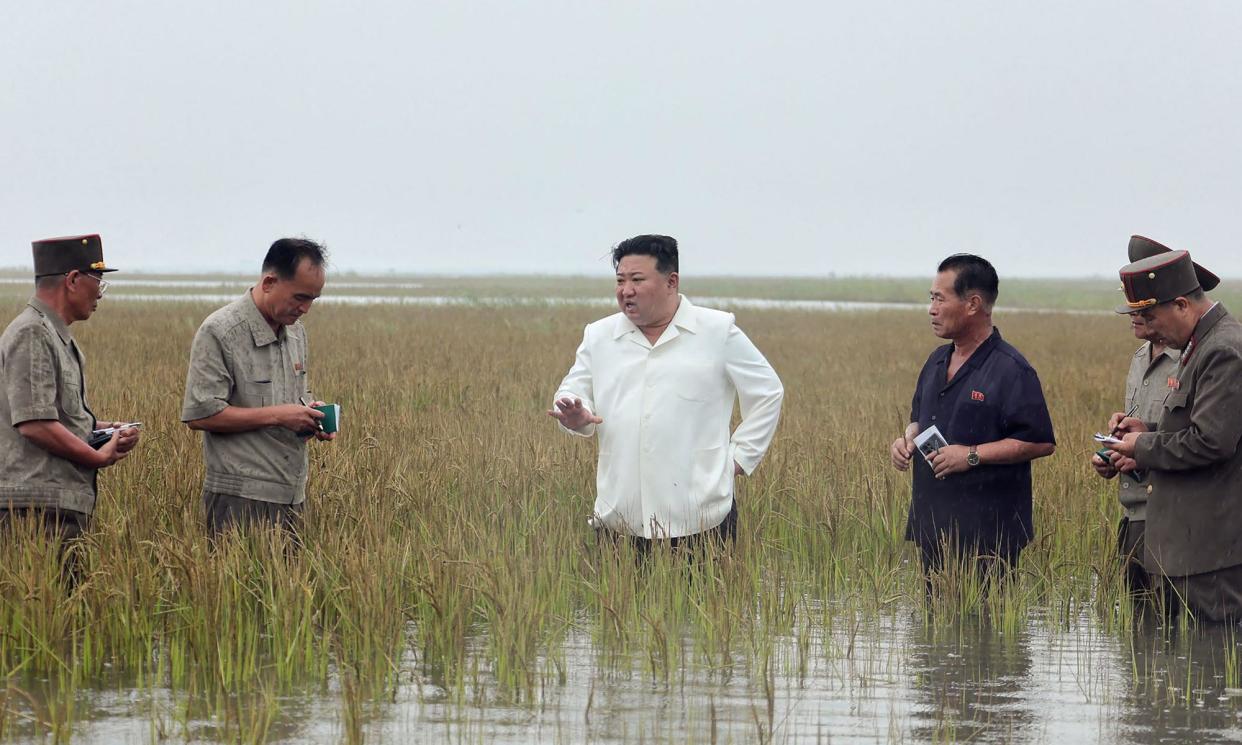North Korea may have executed officials over flood response, reports say

North Korea may have executed multiple officials over damage from devastating floods in July that wrecked thousands of homes and left up to 1,500 people dead or missing, according to South Korean intelligence.
South Korea’s national intelligence service said it was closely monitoring signs that the regime had carried out the executions after the North’s leader, Kim Jong-un, told an emergency meeting of the ruling party’s politburo that he would “strictly punish” those responsible for the damage, the South Korean Yonhap news agency reported.
Heavy rain and flooding struck the northern provinces of Jagang and North Pyongan in July, destroying thousands of hectares of farmland and displacing thousands of people, Yonhap added.
The alleged executions, also reported by TV Chosun in the South, have not been independently verified and North Korean state media has made no mention of them. South Korea’s spy agency said only that it had “detected signs” that executions had taken place, without giving details.
“Around 20 to 30 leaders were charged with corruption and dereliction of duty. They have been sentenced to capital punishment,” TV Chosun said, quoting an unnamed North Korean official.
The executed officials may have included Kang Pong-hun, who was previously the chief secretary of the Jagang provincial committee of the ruling party, South Korean media said.
Kang and other senior officials, including the then public security minister, Ri Thae-sop, were dismissed during the politburo meeting in late July, according to the state-run Korean Central News Agency.
Kim was pictured onboard a dinghy taking part in flood relief efforts in Sinuiju and Uiju County in North Pyongan province, with state media claiming he had overseen an operation to rescue about 5,000 trapped people using military helicopters.
One resident told Radio Free Asia that people in and around part of Ryanggang province were in a “life-threatening” situation as a result of the flooding.
North Korea is particularly vulnerable to natural disasters due to its weak infrastructure and resistance to international aid.
It is particularly susceptible to flooding: a rainstorm in summer 2012 killed an estimated 169 people, while a series of floods and droughts was partly to blame for a famine that killed hundreds of thousands of people between 1994 and 1998.
In 2016, international aid agencies called for millions of dollars of funding for an urgent relief effort in North Korea after typhoon-triggered floods in the country’s remote north-east left 70,000 people homeless and 600,000 others in need of humanitarian assistance, including tens of thousands of children.


